Iron Age 'shrine' discovered in Yorkshire Wolds surrounded by carefully placed animal skulls and bones
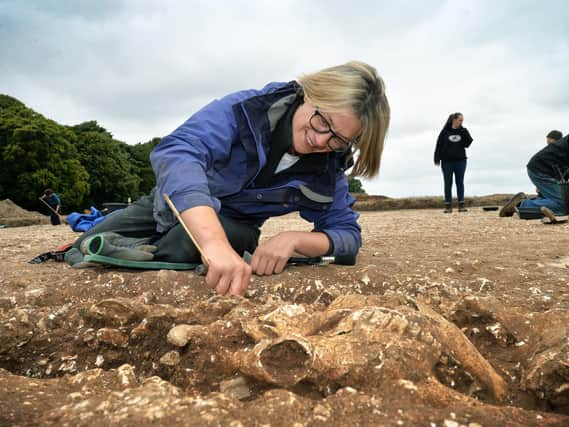

Up to 40 cow skulls, some arranged in pairs, along with cow bones and deer antlers, were placed around the square enclosure, some time after it was taken down.
The shrine is a few hundred yards from a fortified settlement with a substantial circular structure in the centre, which has also been excavated by a team led by Dr Peter Halkon and James Lyall over the past four years.
Advertisement
Hide AdAdvertisement
Hide AdBoth the shrine and the earlier Bronze Age "ring fort" first showed up as cropmarks on the top of a hill in the Wolds in aerial photographs plotted by Cathy Stoertz over 20 years ago.
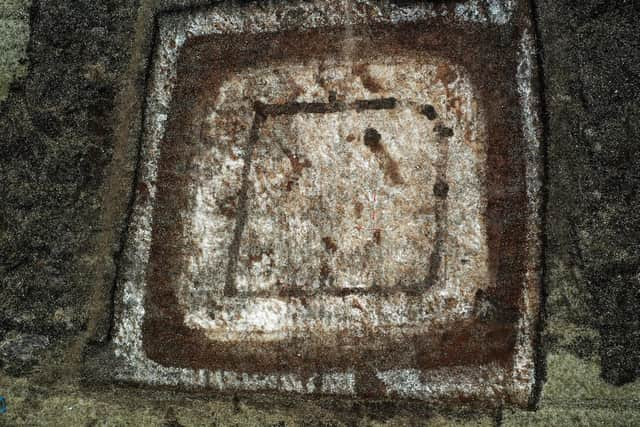

The shrine consisted of a square enclosure surrounded by a deep ditch, with a central area hidden from view by a palisade.
In the centre was the remains of a child, however the bones are in such poor condition, and have been damaged by ploughing, that it may not be possible to determine its sex. It is not known in what period the child was buried there.
But what has excited archaeologists the most are the animal remains which were placed in the earth after the palisade was taken out.
Advertisement
Hide AdAdvertisement
Hide AdDr Halkon said the butchered remains of cattle, as well as sheep and pork, were found at the nearby fort which could once have been a home for a powerful man and his extensive family.
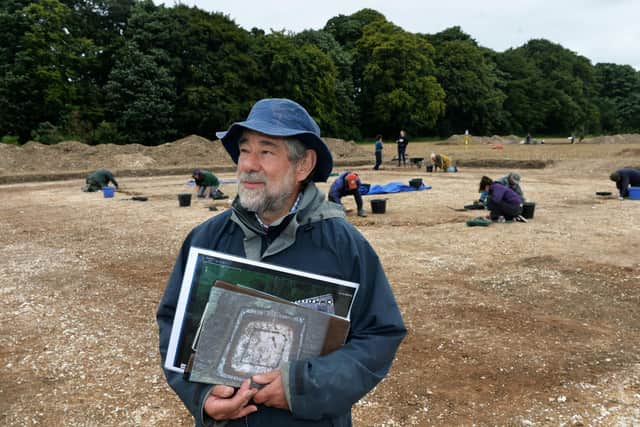

However a deliberate decision was made only to deposit cow skulls and bones and the antlers of deer, a wild, hunted animal, at the shrine.
In one corner archaeologists found forelegs, then three cow skulls, then another skull and a deer antler. In other areas skulls were placed in pairs.
Dr Halkon said the bones were too carefully deposited to be "just rubbish disposal".
Advertisement
Hide AdAdvertisement
Hide AdHe said: "At some point they demolished the monument, pulled out the palisade and reopened the slot where the palisade had been and inserted all the animal bones.
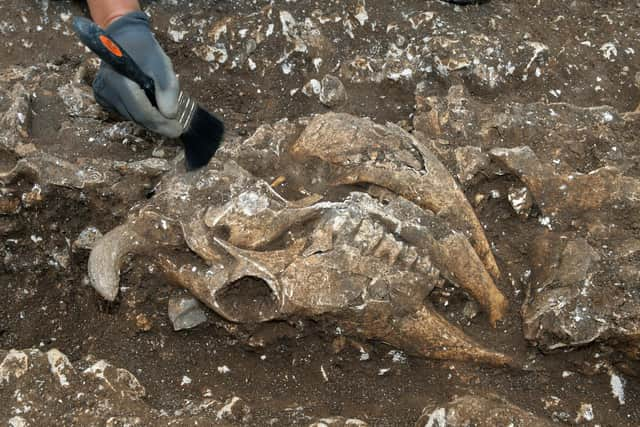

"The forelegs and the heads are bits they didn't eat. They'd eaten the rest elsewhere - probably in the hill fort."
Similar finds have been found elsewhere in the Wolds, but not in such a quantity. Dr Halkon said human heads were venerated and it is possible cattle heads had some kind of symbolism. He said: "Cattle were very important to them, and they probably measured wealth in the numbers of cattle."
He said there are also signs of the Romans being there from small amounts of pottery which was found on the site.
Advertisement
Hide AdAdvertisement
Hide AdHe believes that when the Romans came they would have been aware of a grassy mound and a partially filled-in ditch "and would have recognised it as being ritual of some importance."
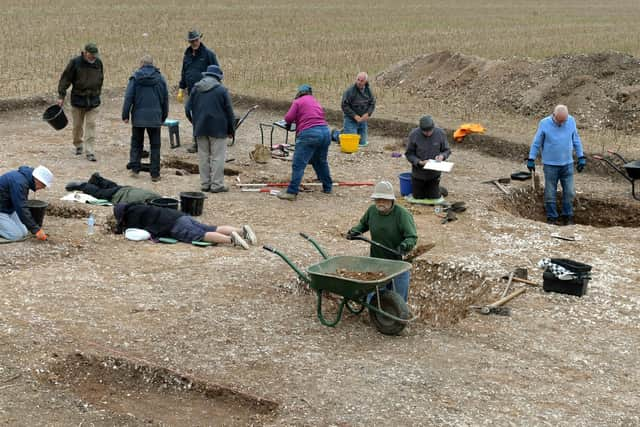

The "ring fort" site also raises many questions, with a possibility that the earliest of three structures on it which preceded the fort had a ceremonial function. It consisted of a ring of very large posts led into by a corridor of large posts.
The fort itself would have been an impressive structure with two rings of defences, approached via an entranceway through two gatehouses. It is thought to date to the later Bronze Age (1000-800BC).
"It must have been incredibly impressive when it was first built," said Dr Halkon. "There would have been a massive chalk bank, probably with a fence on top. You would see this white bank.
Advertisement
Hide AdAdvertisement
Hide Ad"It was probably used as much for status as defence. They were controlling the landscape, definitely."
A large roundhouse, like one found at Paddock Hill, Thwing, in East Yorkshire, later cut through by a smaller roundhouse, which may have been in use in the Iron Age, were also uncovered, suggesting people used the site over a long period of time.
The excavation was sponsored by the Yorkshire Archaeological and Historical Society.